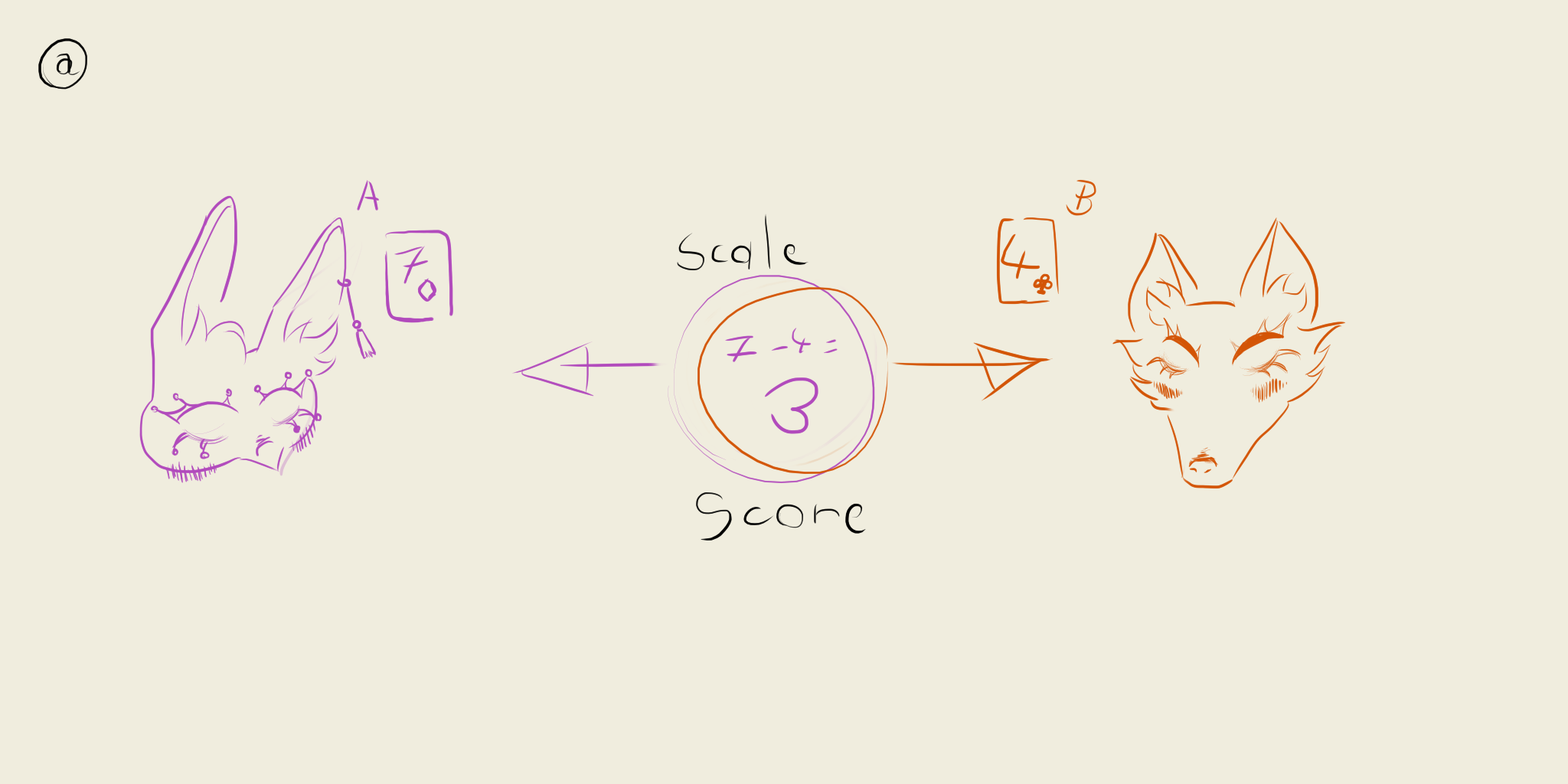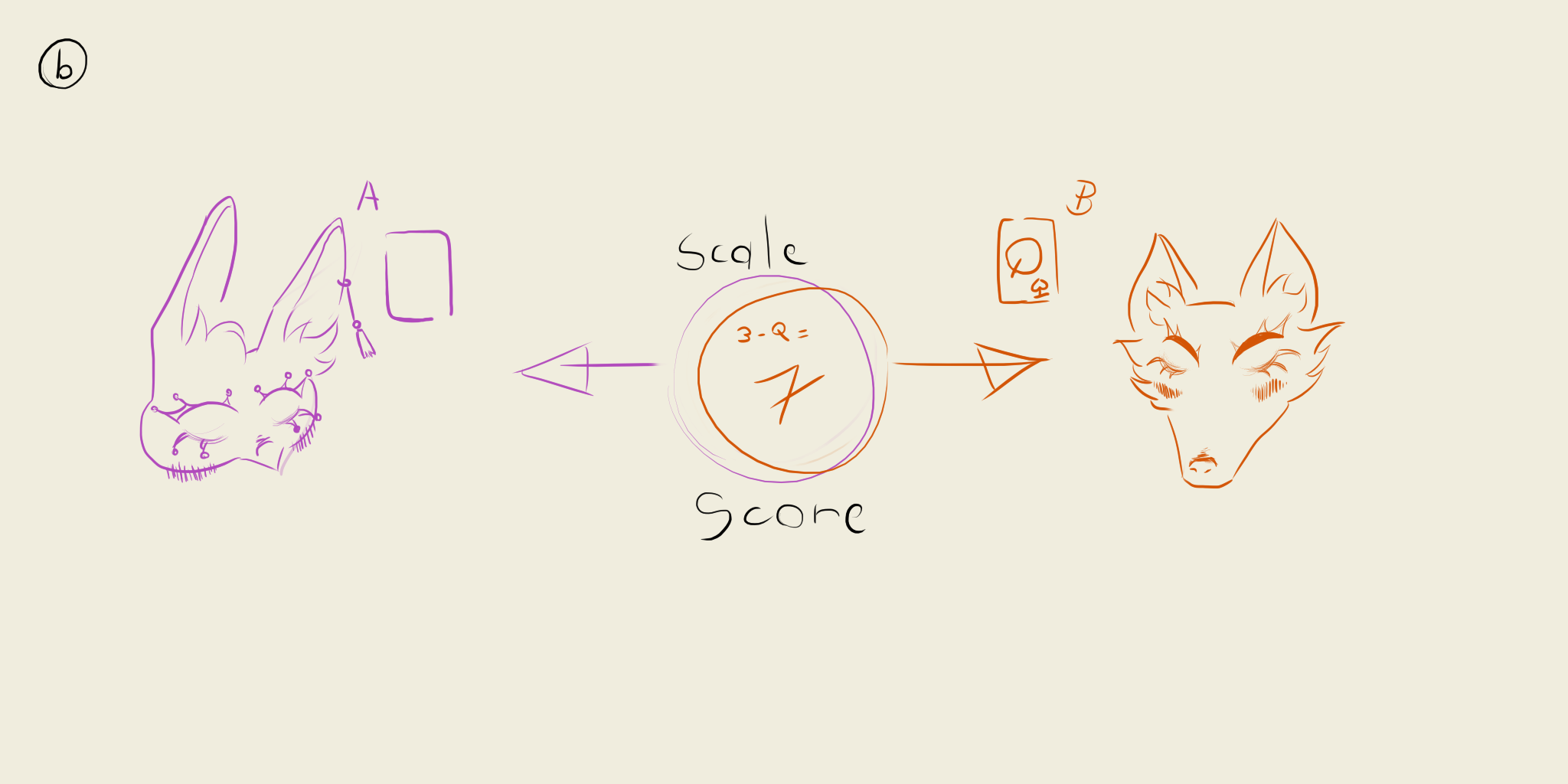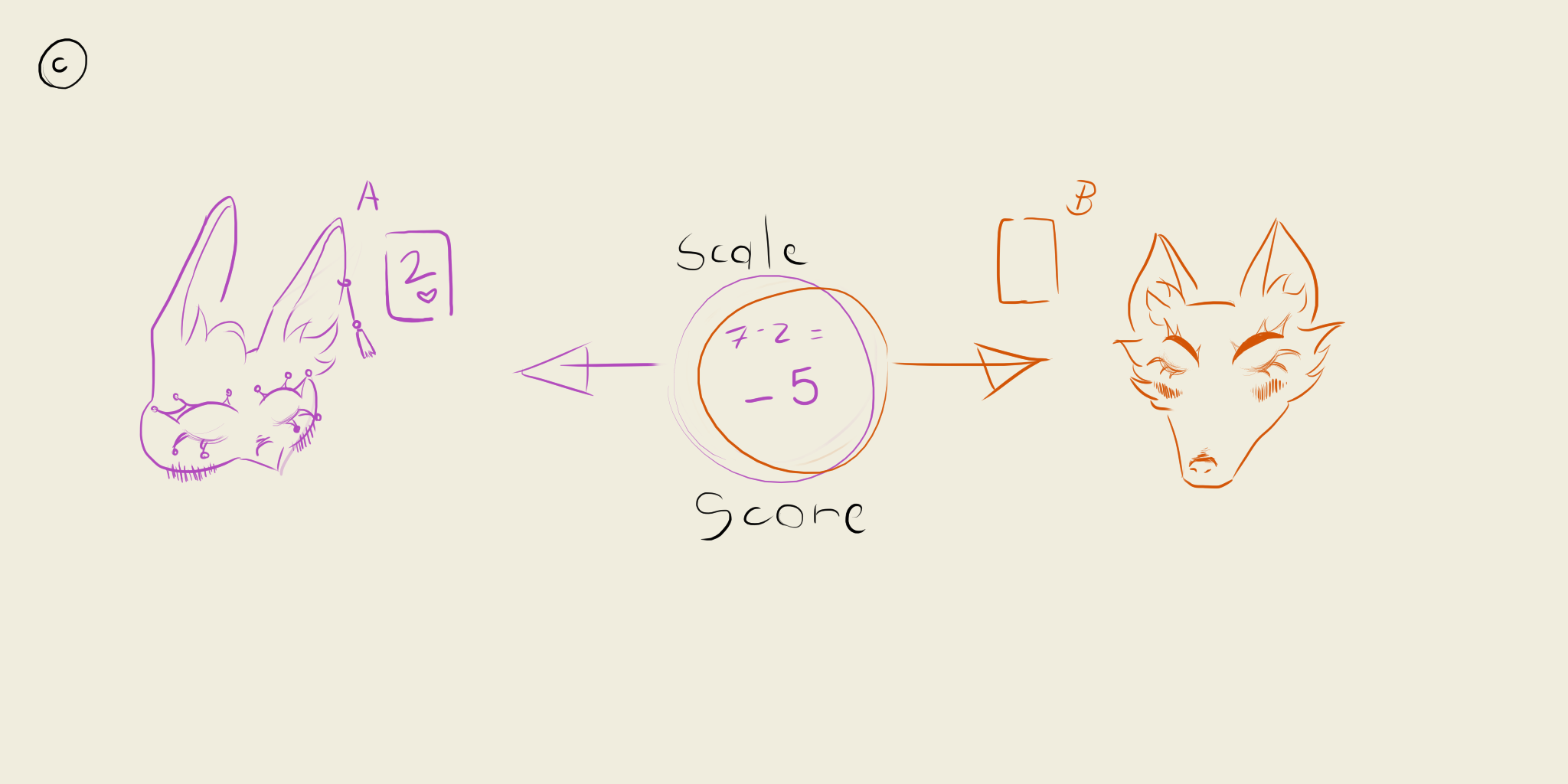The Fool's Errand:
A game about doing it all for naught
The Fool's Errand is a two player game, played with a standard deck of 54 cards, which is to say all number and face cards, as well as two Jokers.
At the beginning of the game, the two jokers are put aside, and the deck gets shuffled, then split in half. Each player gets one of the two jokers, insert it randomly in their deck, and shuffles again.
The game begins by each player drawing a card and simultaneously it down.
The main mechanic of The Fool's Errand works as a kind of tug of war, here referred as 'scale score'.
The initial scale score is zero. By playing their cards, each player tips the scale score.
Let's take an example. Here, Player A and Player B are just starting. Player A drew a 7, and Player B drew a 4. In this case, the score would tip for three points to person A, as illustrated in figure (a).

Then, as the scale score is tipping away from Player B, player B draws first. It's a Queen. In The Fool's Pursuit, all face cards tip the scale score by a value of ten. Three minus ten is negative seven, the scale score now tips towards Player B for seven, as illustrated in Figure (b).

For convenience, after each play, the players announce how much the balance tips for themselves. They do so with negative values if the scale score tips away from them. As an example, Player A draws a 2. Seven minus two is five, which leaves the scale score to still tip towards Player B for five points. In this case, Player A would announce 'negative five', as in Figure (c).

Aces' value depend on the current scale score. If there is a point difference between both players that is equal or greater than eleven, then Aces played by the player whom the scale is tipping away from have a value of eleven point. In all other cases, Aces have a value of one. Let us resume our earlier game: It is now Player B's turn, and they draw an 8. Five plus eight is thirteen, and so Player B announces 'thirteen'. Player A then draws, and they draw an Ace. Since the scale score is off by thirteen, Player A's Ace is worth eleven point, and they announce 'negative 2'. Player B draws, and they draw an Ace as well. Since the scale score tips towards them, their Ace is only worth one, and they announce 'three'.
Now, let's rewind. Once more, Player A just announced 'negative five'. Player B draws a 2, and they announce 'seven'. Player A draws an Ace. The scale score does tip away from them, but it does so by less than eleven, meaning their Ace is worth only one. And so, Player A announces 'negative six'.
From there, Player B draws a 3, and they announce 'nine'. Player A draws, and plays a 9! The scale score is set back to zero. As the one who set the scale score back to zero, Player A gets to scoop all cards currently into play, and put them aside in a pile that will later be used to count the final score.
Jokers are special cards. When a Joker is played, the scale score is set to zero, regardless of its previous value. When a player draws a Joker, they can play it right away, or choose to put it aside, face up. If they do so, they draw and play another card, and the game continues as normal. If a Joker is put aside in this way, the player who has a Joker aside can choose to play it anytime they would play another card, in place of said other card.
When a player has a Joker aside, it is possible that the opposing player sets the scale score to zero, either by drawing a card with the correct value to do so, or by drawing their own Joker. In this case, the player whose Joker was put aside cannot play their Joker as a response, and the person who set the scale score to zero is the one to scoop up the cards. When a Joker is played, and cards are scooped as a result, any Jokers currently out of the deck are shuffled back in.
The game is over when both players are left with only the Joker in their deck. If there are still cards in play that have not yet been scooped up when this happens, those cards are set aside and will not be used for score. When this occurs, both players start to count the card they scooped for points. Number cards are worth as many points as their value. Aces are worth a single point. Figure cards (King, Queen, Knight) are worth ten points each. The player with the most points is declared the winner, and a Fool.


